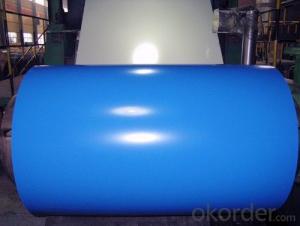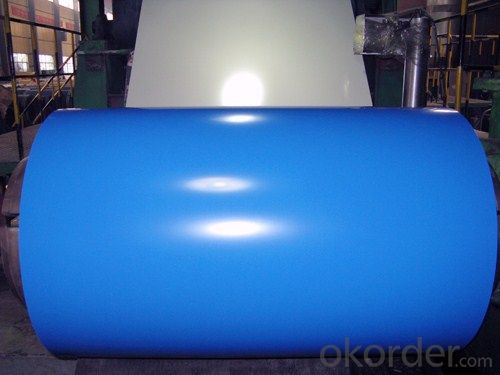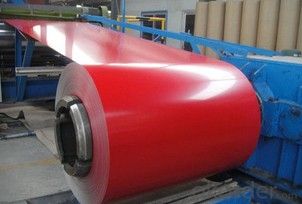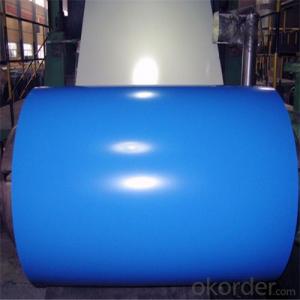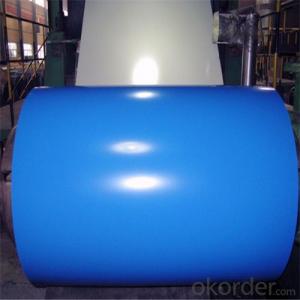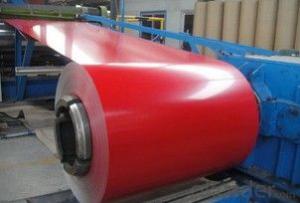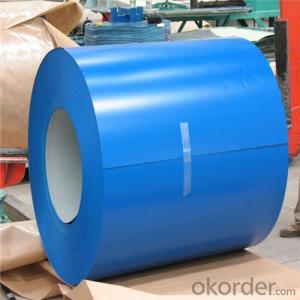Pre-painted Galvanized Steel Coil Used for Industry with The Best Offer
- Loading Port:
- Tianjin
- Payment Terms:
- TT OR LC
- Min Order Qty:
- 25 m.t.
- Supply Capability:
- 8000 m.t./month
OKorder Service Pledge
OKorder Financial Service
You Might Also Like
Pre-painted Galvanized Steel Coil Used for Industry
1.Structure of Pre-painted Galvanized Steel Coil Description
With GI as base metal, after pretreatement and liquid dope with several layers of color, then after firing and cooling, finally the plate steel is called pre-painted galvanized steel. Pre-painted galvanized steel is good capable of decoration, molding, corrosion resistance. It generally displays superior workability, durability and weather resistance.
Painting steel isthe product based on the metal sheet, of which surface is finally installed ofthe plastic film(PVC, PE) IN addition to being firstly covered with the coatingand printed ink in. The coated layer of painting steel plate consists of chemicaland filming layer, primer coated layer, pattern printed layer and surfacecoated layer. The top and back coating shall generally be the weatherproofpaint, as well can be the application of the paint with special capabilitiessuch as stain-resistant, self cleaning capability, high thermal resistance,antistatic capability, sterilizing capability, finger-print prevention and etc.
2.Main Features of Pre-painted Galvanized Steel Coil
•High Purity
•Easy control and operation
•High strength
•Fast melting
•Competitive price
•Best Service
3. Pre-painted Galvanized Steel Coil Images
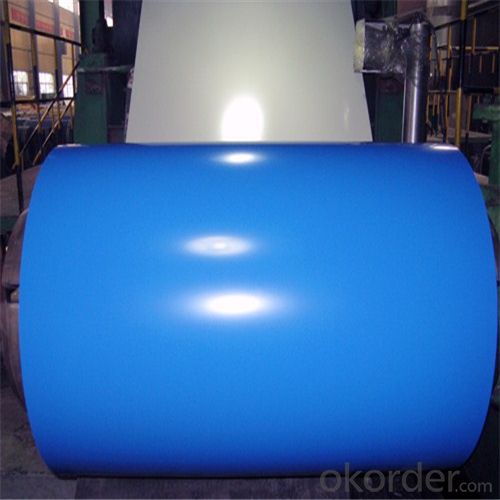
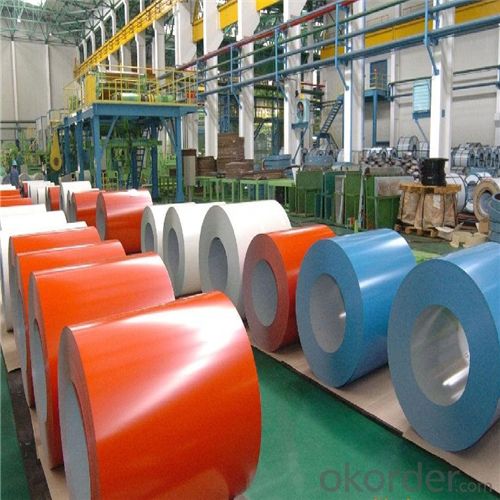
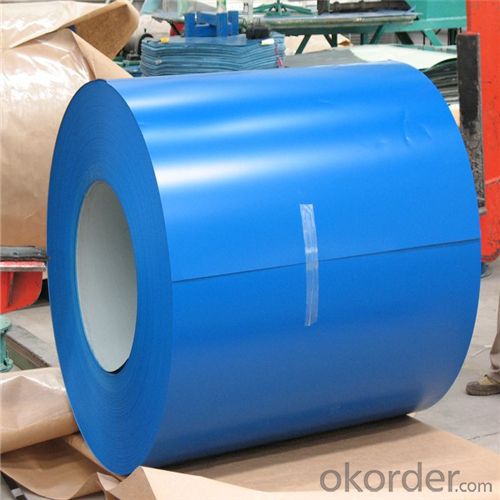
4. Pre-painted Galvanized Steel Coil Specification
Pre-painted Galvanized Steel Coil | |
Thicknenss | 0.18mm-1.5mm |
Width | 900-1250mm |
Coating mass | 30-275g/㎡ |
Paint | PE, PVDF, PU |
Color | RAL Scale |
Coil weight | 3-7mt |
Coil inner diameter | 508 or 610mm |
5.FAQ of Hot-Dip Galvanized Steel Coil
We have organized several common questions for our clients,may help you sincerely:
①How about your company?
A world class manufacturer & supplier of castings forging in carbon steel and alloy steel,is one of the large-scale professional investment casting production bases in China,consisting of both casting foundry forging and machining factory. Annually more than 8000 tons Precision casting and forging parts are exported to markets in Europe,America and Japan. OEM casting and forging service available according to customer’s requirements.
②How to guarantee the quality of the products?
We have established the international advanced quality management system,every link from raw material to final product we have strict quality test;We resolutely put an end to unqualified products flowing into the market. At the same time, we will provide necessary follow-up service assurance.
③How long can we receive the product after purchase?
In the purchase of product within three working days, We will arrange the factory delivery as soon as possible. The pecific time of receiving is related to the state and position of customers.Commonly 7 to 10 working days can be served.
- Q: What are the main characteristics of galvanized steel coils?
- The main characteristics of galvanized steel coils include a protective zinc coating that prevents corrosion, high strength and durability, excellent formability and weldability, and a smooth and shiny surface finish.
- Q: I'm getting new strings on my dad's old acoustic guitar so I can learn how to play it and I'm wondering if I should get nylon or steel strings. Are there any major differences between the two aside from the nylon strings being easier on your fingers? Like do the Nylon strings sound different?
- If it's a classic guitar, then you should get nylon strings, because you can't use steel strings on a classic guitar, and you can't use nylon strings on an acoustic guitar , I would suggest that you buy a classic guitar, because it's really good for beginners.
- Q: Can you recycle steel? And if you wanted to buy some recycled steel, where would you get it?
- Steel is the most recycled material. But in recycling steel you would need the usual equipment in a foundry. The finished (recycled) product cannot be discerned visually. You cannot differ it from those coming from virgin steel ingots. The finished product (or steel material) would have to depend on your requirement, whether it is for structural, architectural or otherwise. For your requirement (enough to build a cruise ship), it would be best to go to a smelter. You might get better prices and quality compared to that from a scrap yard.
- Q: I'm a hiker and cook on a camp fire with a canteen cup. So which would be a better material for cooking on a campfire with, aluminum or stainless steel?
- Stainless steel. And you do NOT have to ruin the pan on a campfire. Carry some liquid dishwashing liquid (which you will want anyway). BEFORE putting the pan onto the fire, smear some dishwashing liquid on the OUTSIDE of your pan: bottom AND the sides. As the pan sits on the fire, the SOAP will blacken and soot up instead of the pan. When you wash the pan, the soot slips off with the soap you applied beforehand. If you don't coat the outside of your pan with dishwashing liquid, it will soot up and the soot does not wash off.
- Q: What are the different types of steel surface finishes for coils?
- There are several types of steel surface finishes for coils, including mill finish, galvanized finish, coated finish, and polished finish. Mill finish refers to the natural, untreated surface of the steel, which may have slight imperfections. Galvanized finish involves coating the steel with a layer of zinc to enhance corrosion resistance. Coated finishes can include various types of coatings such as paint, epoxy, or polymer to provide protection and aesthetic appeal. Lastly, a polished finish involves buffing or grinding the steel surface to create a smooth, reflective appearance.
- Q: What is the role of steel coils in the supply chain?
- Steel coils play a crucial role in the supply chain, particularly in the manufacturing and construction industries. These coils, which are typically made from hot-rolled steel, serve as a primary raw material for a wide range of products, including automobiles, appliances, construction materials, and various other industrial goods. The supply chain for steel coils begins with the production of raw steel, which is then processed and shaped into coils at steel mills. These coils are subsequently transported to various manufacturing facilities where they are transformed into finished products. Throughout this process, steel coils act as an intermediary product that is easily transportable, stackable, and can be easily manipulated to fit different manufacturing requirements. One of the key advantages of using steel coils in the supply chain is their strength and durability. Steel is known for its high tensile strength, which enables it to withstand significant loads and pressures. This makes steel coils ideal for applications that require robust materials, such as structural components in buildings, heavy machinery, and vehicles. Moreover, steel coils are highly customizable, allowing manufacturers to tailor the dimensions and specifications of the coils to meet their specific needs. This flexibility ensures that the supply chain can efficiently deliver steel coils that align with the requirements of different industries and projects. In terms of logistics, steel coils are typically transported in large quantities using specialized equipment such as flatbed trucks, railcars, or even ships. Efficient logistics planning is essential to ensure on-time delivery and minimize transportation costs. Additionally, proper storage and handling are crucial to prevent damage to the coils during transit and storage. Overall, steel coils play an integral role in the supply chain by serving as a versatile raw material that can be shaped and transformed into various end products. Their strength, durability, and flexibility make them a vital component in industries that rely on high-quality steel, ultimately contributing to the overall economic growth and development of numerous sectors.
- Q: How are steel coils used in the food processing industry?
- Steel coils are commonly used in the food processing industry for various purposes such as storage, transportation, and cooking. They are often used to create food storage containers, tanks, and silos, ensuring a safe and hygienic environment for storing raw materials or processed food. Steel coils are also used in the construction of equipment like ovens, grills, and fryers where they provide heat conductivity and durability. Additionally, steel coils are used for manufacturing conveyor belts and other machinery parts, allowing for efficient food processing and packaging operations.
- Q: How are steel coils labeled and identified?
- To ensure accurate tracking and handling of steel coils throughout their journey, various methods are employed to label and identify them. The labeling and identification process typically consists of the following steps: 1. Initial Marking: At the outset, the manufacturer's name or logo is affixed to the steel coil, enabling easy identification of the producing company. 2. Unique Identification Number: A distinct identification number, commonly known as a coil number, is assigned to each steel coil. This number is often engraved or imprinted on the surface of the coil and serves the purpose of tracking and managing inventory. 3. Specifications of Size and Weight: Labels indicating the size and weight specifications of the steel coils are attached. This information aids in determining the coil's dimensions and weight capacity, ensuring appropriate handling and transportation arrangements. 4. Indication of Grade and Material: The labeling typically includes information about the grade and material composition of the steel coil. This essential data offers insights into the properties and quality of the steel, guaranteeing its correct utilization in manufacturing processes. 5. Heat or Lot Number: Steel coils may also bear a heat or lot number, which denotes the production batch from which the coil originated. This information contributes to traceability and quality control, simplifying identification in the event of any issues or defects. 6. Barcodes or QR Codes: Many steel coils now feature barcodes or QR codes that can be scanned using automated systems. These codes contain all pertinent information about the coil, streamlining data capture and management throughout the supply chain. Proper labeling and identification of steel coils are of utmost importance for efficient logistics management, inventory control, and quality assurance. By implementing these identification methods, manufacturers, distributors, and end-users can effortlessly track, handle, and utilize steel coils in a secure and productive manner.
- Q: hello, I am trying to figure out what wok to get and came across a website that offers many woks out of different materials. what is the best, or considered original (traditional)? I have a couple of cast iron pots and pans - too heavy, so I am assuming it will take some time for a cast iron wok to heat up. what about carbon steel and stainless steel? Thanks
- Carbon steel is definitely the way to go. This is the authentic wok. Of course, you must be aware that it can rust if not dried--but in use you will seldom wash it anyway. The correct practice is simply to wipe it out with a paper towel. In this way the wok keeps its natural non-stick qualities. Whenever it is washed it must be re-seasoned--by heating it very hot with salt. Stainless steel of course does not rust and makes a pretty picture hanging up--but its utility ends there. It does not have the heat conduction qualities that are needed. Still, there are other factors which go into wok cooking (such as degree of heat available) which have nothing to do with the wok. With that in view, a SS wok might be your choice, but from a cooking standpoint, carbon is better. One added factor you must consider is thickness of the steel. Cheap woks will flex readily if grasped by the handles. A quality wok is twice as thick. It is not too much to aim for 1/8 thickness, or nearly that. There is also the flat bottomed Shanghai wok which is about 1/4 thick and usually comes with a teflon finish. These are very inexpensive but useful because they can be heated up to a high temperature which it will hold to a certain extent. The bane of wok cookery is insufficient heat. (I have an electric stove right now which exhibits that defect).
- Q: What are the weight ranges of steel coils?
- The weight ranges of steel coils can vary widely depending on the specific type and dimensions of the coil. However, typical weight ranges for steel coils can range from a few hundred kilograms to several tons.
Send your message to us
Pre-painted Galvanized Steel Coil Used for Industry with The Best Offer
- Loading Port:
- Tianjin
- Payment Terms:
- TT OR LC
- Min Order Qty:
- 25 m.t.
- Supply Capability:
- 8000 m.t./month
OKorder Service Pledge
OKorder Financial Service
Similar products
Hot products
Hot Searches
Related keywords
